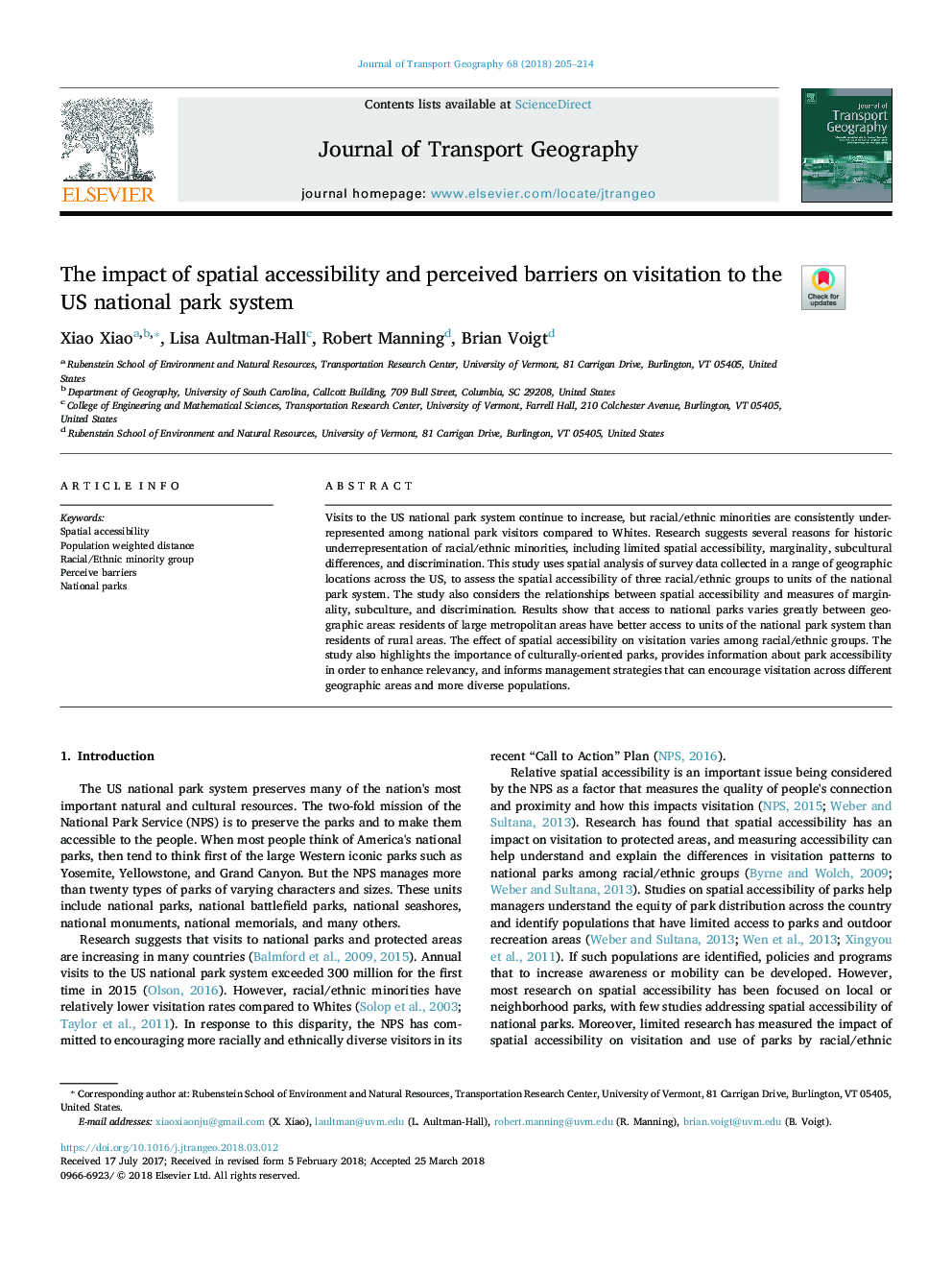| Article ID | Journal | Published Year | Pages | File Type |
|---|---|---|---|---|
| 7485103 | Journal of Transport Geography | 2018 | 10 Pages |
Abstract
Visits to the US national park system continue to increase, but racial/ethnic minorities are consistently underrepresented among national park visitors compared to Whites. Research suggests several reasons for historic underrepresentation of racial/ethnic minorities, including limited spatial accessibility, marginality, subcultural differences, and discrimination. This study uses spatial analysis of survey data collected in a range of geographic locations across the US, to assess the spatial accessibility of three racial/ethnic groups to units of the national park system. The study also considers the relationships between spatial accessibility and measures of marginality, subculture, and discrimination. Results show that access to national parks varies greatly between geographic areas: residents of large metropolitan areas have better access to units of the national park system than residents of rural areas. The effect of spatial accessibility on visitation varies among racial/ethnic groups. The study also highlights the importance of culturally-oriented parks, provides information about park accessibility in order to enhance relevancy, and informs management strategies that can encourage visitation across different geographic areas and more diverse populations.
Keywords
Related Topics
Life Sciences
Environmental Science
Environmental Science (General)
Authors
Xiao Xiao, Lisa Aultman-Hall, Robert Manning, Brian Voigt,
